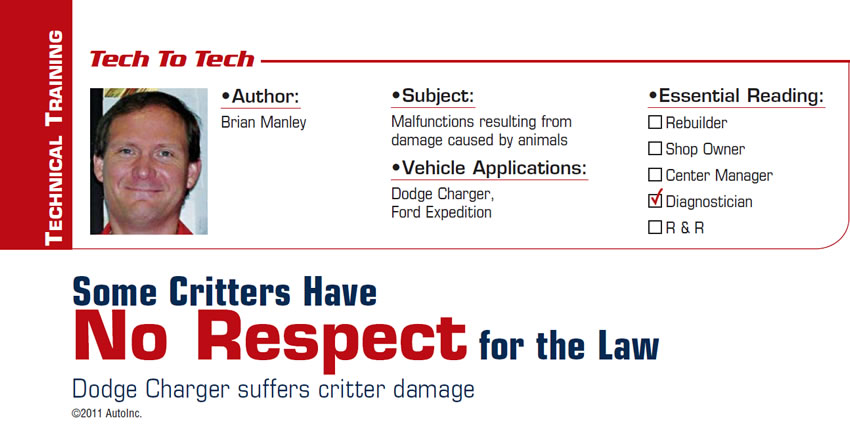
Tech to Tech
- Subject: Malfunctions resulting from damage caused by animals
- Vehicle Applications: Dodge Charger, Ford Expedition
- Essential Reading: Diagnostician
- Author: Brian Manley
In my opinion, the new Dodge Charger is one sweet ride; turn it into a police cruiser and it looks fast and intimidating just sittin’ on the side of the road. When our local sheriff dropped off his patrol car, it still looked impressive; however, the service-engine lamp and supplemental-restraint lamps were both illuminated, and there was a noticeable seat-of-the-pants misfire. This charger was currently pretty lame, and we pulled her directly into our “Emergency Room” (Figure 1).

When we plugged into the data-link connector, the first code detected was P0301 “Cylinder 1 Misfire Detected” (Figure 2).
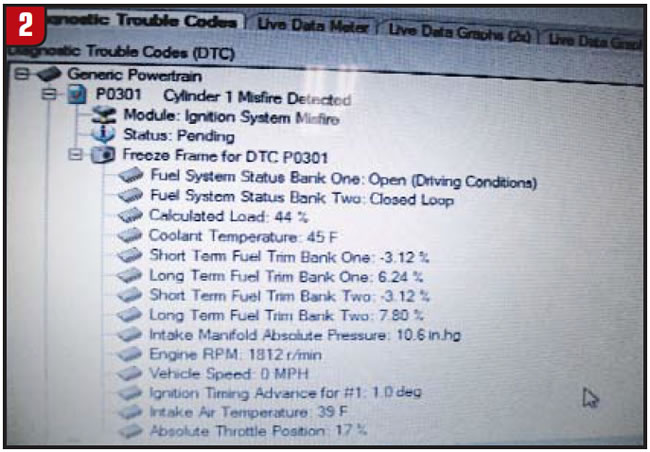
At first, after I popped the hood and performed a visual inspection, nothing caught my eye. I focused on looking for big things like damage caused by high-speed chases, crashing and “Dukes of Hazard”-style jumps. Surprisingly, the vehicle looked very unmolested, except for the addition of the police package (lights, siren, enhanced A/C generator). But the white hairs on the engine (Figure 3) were the first clue! Simply by adjusting my focus, I noticed a light dusting of short, white hairs that immediately triggered my “Now I need to look for chewed wires and a nest” dialogue in my head.
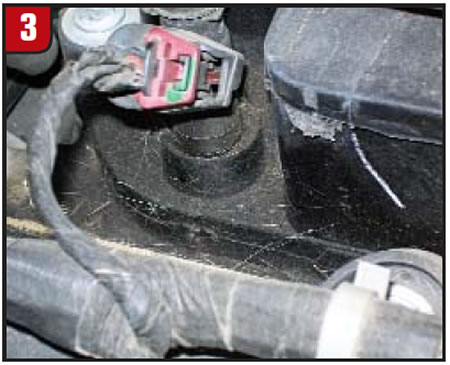
Exposed copper and severed conductors
Once I zeroed in on the possibility of critters under the hood, I began spying a few select wires that had, indeed, become teeth-sharpening fodder for some furry beast. Wires beside the radiator support and near the horn, headlamps – and, yes airbag sensors – were chewed and cut in two (figures 4 and 5).
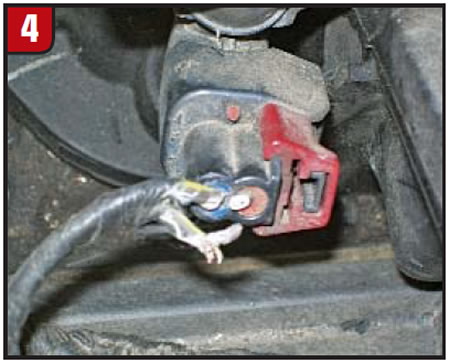
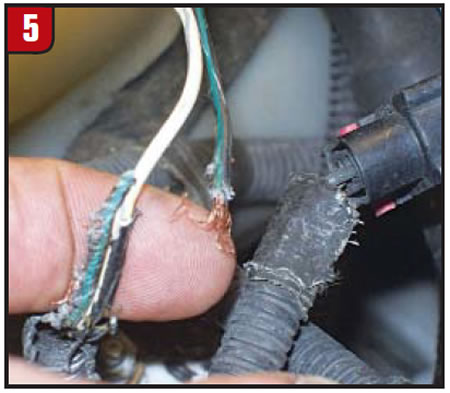
I had to look pretty closely, but I saw that just one of the wires attached to the first injector was completely severed as well! (It’s still fun to find the root cause for a misfire, especially when it is not a typical reason.)
Wires severed near the front SRS sensor
So, my next task was to look at all the wires, hoses, lines – essentially everything – for signs of further damage. I was fairly confident that I had found the reason for the misfire code and the supplemental-restraint-system (SRS) lamp being on, but I needed to ensure that when this cruiser hit the road next time, it would perform as expected without fail.
When we dropped the plastic belly pan below the front bumper, we found a clue that pointed to the identity of our unknown suspect: droppings (Figure 6). It just goes to show: You can tell the species by its feces! We now knew that our culprit was a bunny, and we put the sketch artist to work right away.
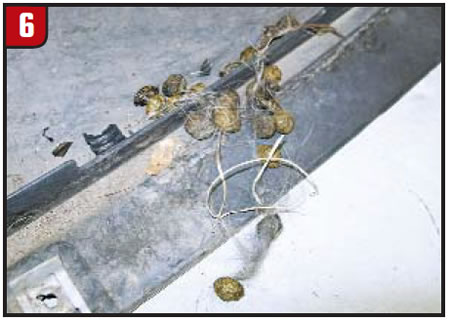
Nesting is a nuisance!
Recently, I had a customer with a Ford Expedition tell me that he had no heat coming from his panel outlets or to his feet; the fan blew to the windshield only. You probably thought the same thing that I did: This means that the vacuum-controlled manual heater system is performing as it should – it is in its “default” mode. So, where do I start?
I have learned to scrutinize those crucial little black vacuum hoses that often break under the hood, so I popped the hood. Imagine my surprise when I saw a really big nest on top of the engine, spreading to the back of the engine under the cover of the firewall (Figure 7).
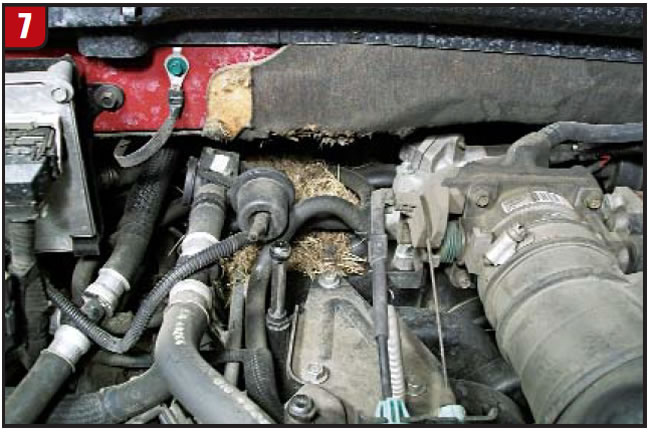
In addition, the critters-in-residence had borrowed much of the under-hood insulation for nesting material, so we removed the nest with leather gloves (Figure 8) and vacuumed out the leftover scraps. A word to the wise: Never forget the urine, feces and potential disease just waiting to wreak havoc with you and your buddies in the shop. We always wear gloves and often a mask. If there is any visible dust, we’ll treat it like a brake job and wet the nest with water.
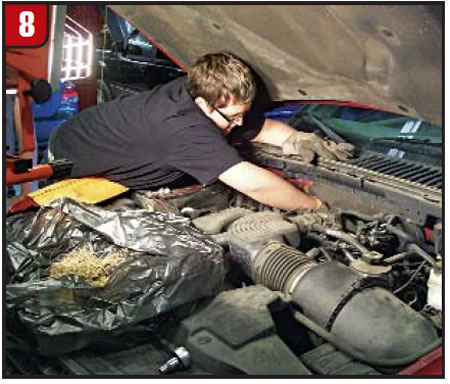
Once the nest had been removed, we began the search for vacuum-line damage. Figure 9 shows two breaks in the hoses; one is clean and the next has signs of chewing.
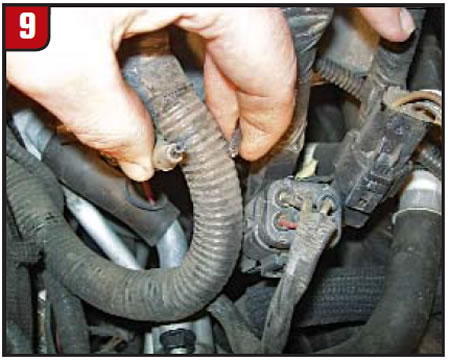
Thankfully, repairing both breaks returned the heating, ventilation and air-conditioning (HVAC) system to proper working order.
How do we keep these critters off the “10 Most Wanted” list? Over the years I have discovered that removing sources of food is an important deterrent. If you park in the garage and mice are nesting in your vehicle, make certain that you have no dog food, bird seed or other food source available. If bunnies are burrowing on top of your customer’s belly pan, your customer needs to change where he or she parks their car and perhaps use mothballs or “bottled urine” – such as fox urine – to deter the rabbits. Critters will avoid using vehicles as nests if they are turned into hard-to-reach, uncomfortable places. And customers can avoid unnecessary hassles and repairs in the process.

Brian Manley is a vocational automotive instructor for the Cherry Creek school district in Aurora, Colo. He is an ASE master certified automobile technician and a former member of the National Automotive Technicians Education Foundation board of trustees. You can reach him at [email protected].
This copyrighted article is reprinted with the permission of AutoInc., the official publication of the Automotive Service Association (ASA). To learn more about ASA and its commitment to independent automotive-service and repair professionals, visit www.ASAshop.org or call 800-272-7467.













